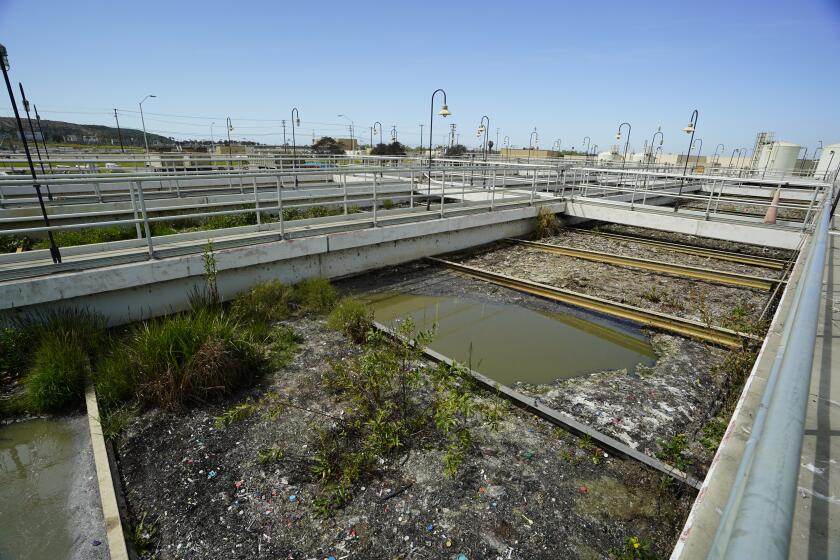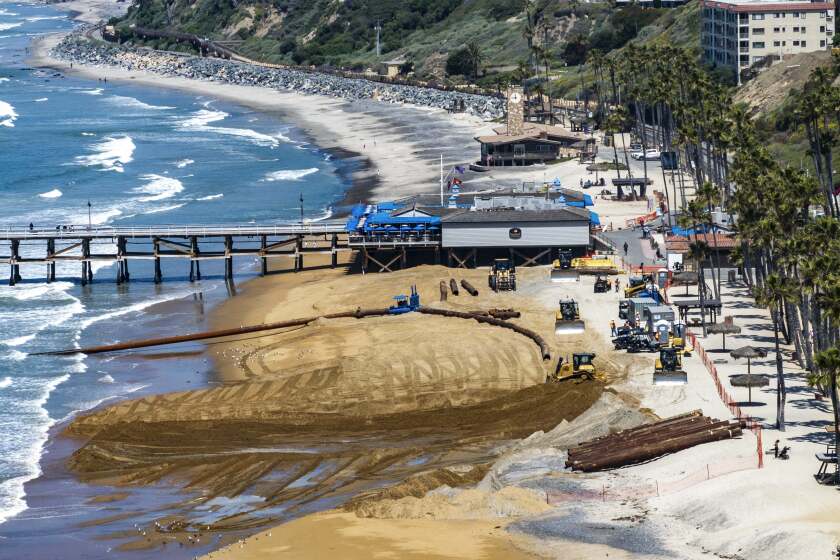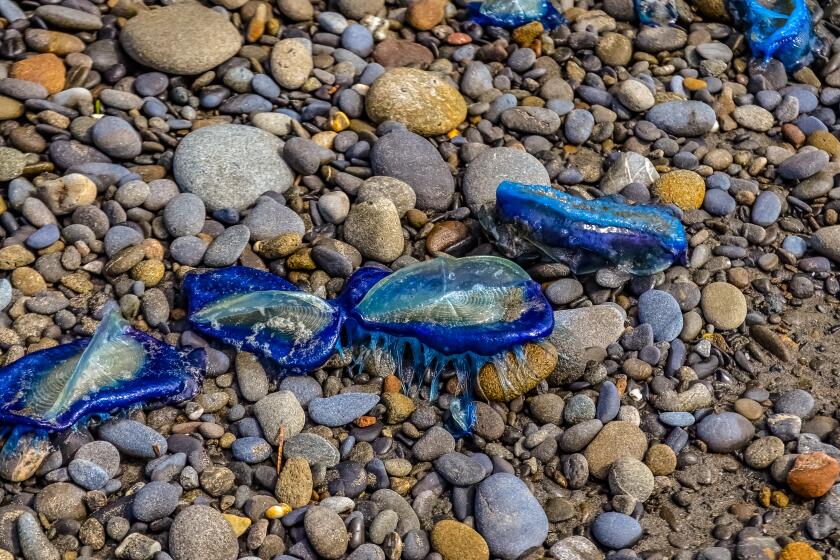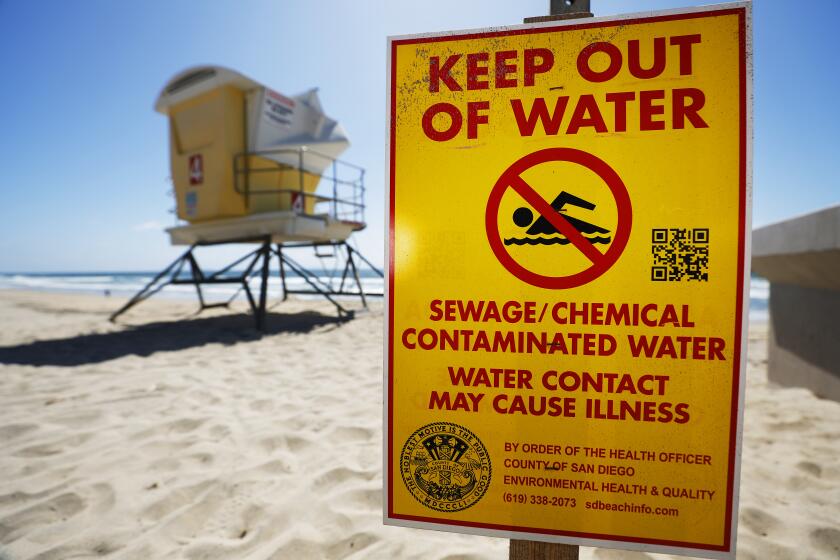SeaWorld works to save pygmy sperm whale that beached itself in La Jolla
A pygmy sperm whale that beached itself on La Jolla Shores was in critical condition Saturday as veterinarians and other animal-care specialists from SeaWorld worked to save its life.
Experts say the likelihood that the animal will survive is not high.
“This is a very critical period for the calf and at this time it is impossible to determine her long-term prognosis,” SeaWorld spokesman David Koontz said in a statement Saturday afternoon. “SeaWorld is coordinating its efforts with (the) National Marine Fisheries Service.”
The whale is being treated inside a rehabilitation pool at the park’s Animal Health and Rescue Center.
The calf was found on the beach Friday afternoon by a crowd of beachgoers, including a group of marine conservation students from the nearby Scripps Institution of Oceanography.
Master’s candidate Erika Delemarre said she and her friends worked to calm the animal for up to an hour while the team from SeaWorld responded to the emergency call.
They cooled the whale with seawater dragged to the site by some children with their sand buckets. Others used an umbrella as a source of shade, Delemarre said.
“It was really a team effort,” she said. “We all wanted to see this animal survive.”
Delemarre said the rescue was bittersweet; she was excited to see the animal up close but afraid for its predicament.
She said it was fortunate the whale beached itself so near the institution. “It couldn’t have picked a better place to come ashore, as unfortunate as it is,” Delemarre said.
Pygmy sperm whales grow up to 14 feet in length and are similar to the great sperm whales for which they are named, according to the American Cetacean Society.
Experts say they tend to stay alone or in small groups.
They also are slow swimmers and tend to avoid ships, so most of what is known about them is gleaned from researchers studying the stranded animals.
“Strandings are common to this species, especially in some areas of (the) southeast coast of the United States, and often they strand alive either as single individuals or cow calf pairs,” the American Cetacean Society website states. “Many have been taken to aquariums where all efforts to keep them alive have been unsuccessful.”
kristina.davis@sduniontribune.com
Twitter: @kristinadavis
Get Essential San Diego, weekday mornings
Get top headlines from the Union-Tribune in your inbox weekday mornings, including top news, local, sports, business, entertainment and opinion.
You may occasionally receive promotional content from the San Diego Union-Tribune.












